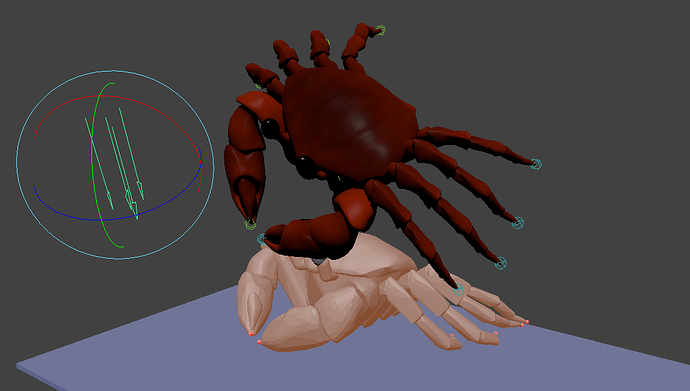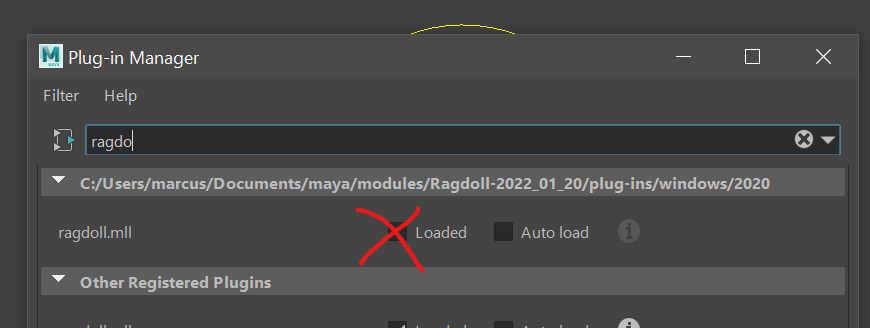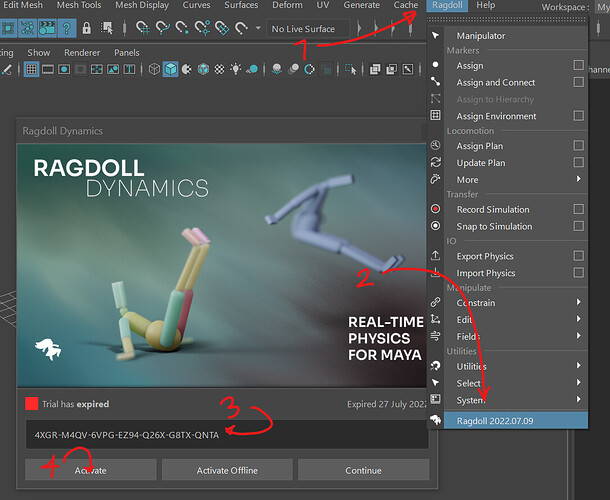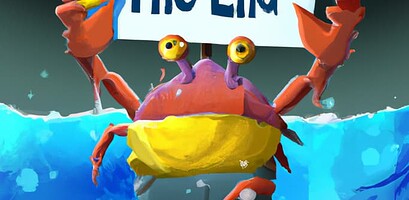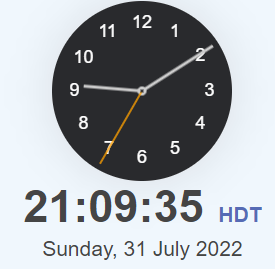Pushing another update to the crab rig with 3 changes, see the same link above.
- Much stronger stiffness, at lower values
- More more effective Pin Constraint at tips, for e.g. Locomotion
- Less groups
For stiffness, check this out!
Super strong. These are stiffness values between 0.01 → 1.0. (No more values approaching 100,000 and beyond)
For pins, you should also find that values less than 100 to be a reasonable max for a very hard pin, as opposed to 100,000 and beyond).
Also rearranged the groups for a little less complexity; you can now edit all feet from a single group (as opposed to 1 group per foot, 8 in total).
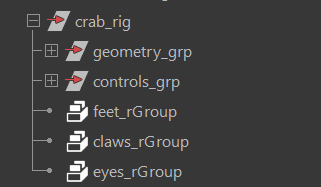
Behind the Scenes
For your own reference, here are some notes on how these things were made possible.
In both feet and tips, it was a problem of mass. The tips are especially damning, as they are tiny tiny tiny. Ragdoll would treat these as any other part of the crab, and compute a mass relative its size. Because it is so small, it would get a very small mass.
You might wonder what mass has got to do with anything. We aren’t interested in them weighing down on the foot, and it doesn’t seem related to stiffness?  But! Such is life. Ragdoll is all about forces, and any force is relative the mass upon which it acts. Between the tip and the last joint of the crab foot is a force keeping them together, and when one of them is heavy and the other light, the more complicated it gets for Ragdoll to keep them together, hence values that reach into the thousands.
But! Such is life. Ragdoll is all about forces, and any force is relative the mass upon which it acts. Between the tip and the last joint of the crab foot is a force keeping them together, and when one of them is heavy and the other light, the more complicated it gets for Ragdoll to keep them together, hence values that reach into the thousands.
For the legs, I took a slightly different route. I didn’t want the feet to appear more heavy - especially not heavier than the body. So instead editing its mass, it now has a slightly edited Rotate Mass.
This attribute is mostly unexplored, so I’m curious what you think of this and whether you run into anything odd. Things to look out for is any strangeness in the rotation of any part of a leg. As if it’s resisting rotation, almost like Air Density on the solver.
![]()
